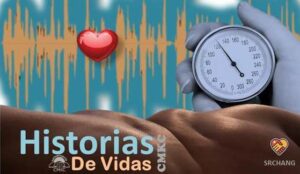
By: Raul Lopez
The national symbols or patriotic symbols are those that represent states, nations and countries, and are thus recognized by other states.
Symbols- Generally these symbols are conveyed from visual or verbal representations that intend to spread the values of the history or famous people of the country. The most commonly used are the National Flag, the Coat of Arms and the National Anthem.
Symbols- The historical and patriotic meaning of the symbols and attributes of this nation expresses the characteristics, roots and customs of its people. Because they represent a country and, by extension, the population, it is considered that the desecration and violation of the patriotic symbols are serious offenses and even crimes.

Patriotic symbols in Cuba. History
The national symbol is a figure that represents a cultural and natural concept of a nation, elements of identity that countries have conceived to differentiate themselves from other countries since their origins. They portray the representation of a country, a nation or a State.
It is usual that these symbols summarize historical values of the land, the striving spirit of the people, the traditions of struggle, accompanied by a phrase.
The best known patriotic symbol is the national flag. Each country has its own flag, which it uses to indicate its dominion in a certain territory and to identify the people who represent it in an international competition, just to mention two possibilities. Olympic athletes, for example, parade at the start of the event with the flag of the country they represent, in an international event the flag of each participating country is present.
The National Flag
The Lone Star Flag. It is one of the three main patriotic symbols together with the Royal Palm Coat of Arms and the Bayamo Anthem, being the most representative at international level. It is a symbol of loyalty and honor for all Cubans. It was the inspiration for the independence struggles.
A Mambí “ready, with a foot in the stirrup, to defend the homeland”
The Cuban Coat of Arms
The Coat of Arms of the Royal Palm or National Coat of Arms of Cuba is the official heraldic symbol of Cuba that, together with the Lone Star Flag and the National Anthem, represents the country since the 19th century. This symbol was adopted by the Republic of Cuba in Arms during the Constituent Assembly of Guáimaro (1869) and ratified by subsequent Cuban constitutions.

Carlos Manuel de Céspedes, October 10: Cuba, a New Dawn of Dignity and Rebelliousness
The National Anthem of Cuba
The Hymn of Bayamo. It is, together with the Flag and the Coat of Arms, a national symbol of the Republic of Cuba. It was composed by Pedro Figueredo and instrumented by Manuel Muñoz. The National Anthem is not a graphic representation, but a musical composition that, through its lyrics, exalts the values and history of the nation.
The Bayamo Anthem is an exhortation to the Cuban people to take up arms to fight for the homeland, which is a source of pride. Although you may lose your life in this endeavor, this will be rewarded in the memory of the homeland, so it is considered preferable to die in that attempt, trying to be free rather than being chained or subjected and enduring all kinds of outrages.
To achieve this, it is necessary to break the chains and attain freedom and independence. For this, it makes a final exhortation to take up arms, qualifying as brave those who brandish them quickly.























